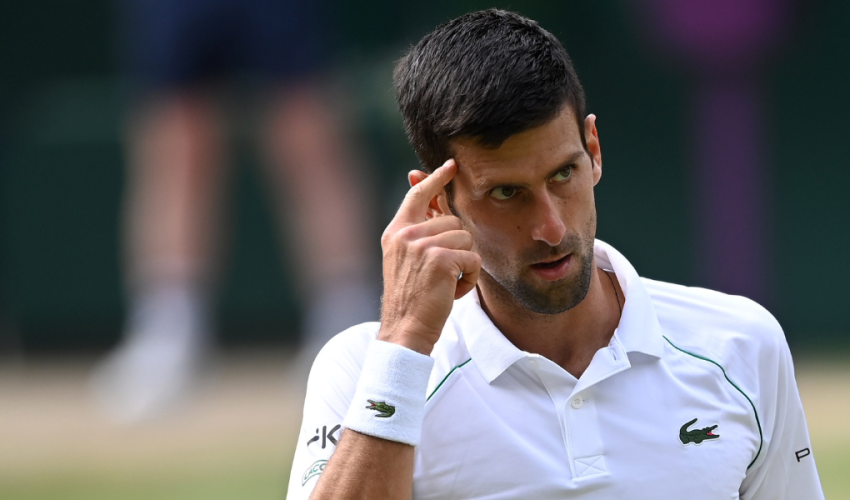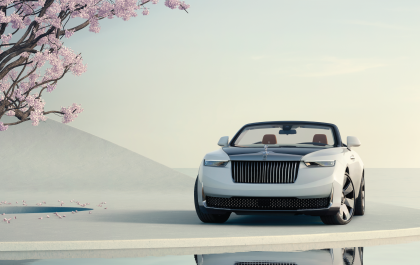Achieving a state of total focus is not just for athletes
By Abak Hussain
When Novak Djokovic is two-sets down, visibly out of juice and knackered at the hands of a younger, more energetic player, an extra-terrestrial tennis noob watching the match may be forgiven for thinking the 36-year-old Serb’s goose is cooked.
No shame in that – even a GOAT has to call it quits at some point, as our mortal bodies march towards decay, and even years of experience are no match for a younger, faster, stronger hotshot. But we are not extraterrestrials – we have been here before and know better than to underestimate Novak. We see Djokovic bounce the ball before serving. We’re into the third set now, and there he is, bounce bounce bouncing for a long – an annoyingly long – time. He is not a crowd favorite anywhere, unlike Federer or Serena, and the boos and jeers weigh on him.
But there is no time for any of that – just watch his face as he bounces the ball. Watch his breathing, the focus in his eyes, the calm self-assurance that possesses his body. This master-of-all-surfaces is doing something much more than just taking a moment before a serve – this here is a ritual of transcendence, as he quiets the noise, absorbs and assimilates the lessons of the last two sets, purges the demoralization and exhaustion, blots out ambient murmurs and the weight of expectations.
Finally, he serves, and his opponent is knocked off balance from which the twentysomething never quite recovers. It’s like a different Djokovic has suddenly stepped on to the court, and the opponent knows he is thoroughly outmatched. Djokovic wins decisively, advancing to the next round, like so many times before.
After his preliminary interviews, he will hit the shower, change, and slowly return to the world from this fever dream. There are more matches ahead, and he will need his rest, because as any elite athlete will tell you, being in the zone is rapturous, but you can’t really live there.

Photo: Tobias Carlsson
THIS MUST BE THE PLACE
The word permeates our language: “She’s in the zone,” we say, when we see a person making all the right moves, unflappable in a state of total concentration. No longer is it the purview of just athletes, although it is still in a sports context that most people speak of being “in the zone.”
It is worth asking, is there really such a place? Or is it mere hyperbole, a mythic space where one’s focus, competence, and creative powers reach their peak? Sports psychologists speak of the importance of headspace, and any athlete will tell you the mental game is just as important as the physical one – otherwise athletes pushing middle-age would never be able to thrash strapping young opponents in the world’s most competitive arenas, as we are seeing more and more of in recent days.
Part of this is explained by the improvements in sports medicine, tech, and fitness equipment which allows people to play at a very high level for much longer. In tennis, age 30 was seen as high time to be put out to pasture – legends Pete Sampras and Steffi Graf were both 30ish when they retired. Hold my beer, say, Federer, Nadal, Djokovic, and both Williams sisters. Plenty of examples can be drawn from other sports as well (Tom Brady and LeBron James come to mind).
But tech and medicine only explain one small aspect of this change: Neuroscience has a better understanding now of the potential of the brain, the plasticity that it retains throughout life, and of what the author Mihaly Csikszentmihalyi calls “flow” states. Older and older athletes, armed with this knowledge, are honing their ever-evolving mental game to offset the physical decline.
Still, there is no reason to idealize what’s going on here and jump to some woo-woo conclusion about halting decline. Mortal bodies will age, get slower, start to fail, and die, and old athletes will eventually be replaced by new ones. That is just the circle of life. The lesson here is in how a flow state can help you be the best you can be.
Ultimately it is not about competition with anyone else, but pitting oneself against one’s own demons (this may sound ironic given the example of sports, which is literally a contest with an opponent). In a state of flow, one’s skills match up fully with the challenge at hand. One is performing at one’s very best, and all distractions melt away. An athlete performing in a state of flow may still end up losing to a superior opponent – but that’s not the point. The point is to blot out the unhelpful thoughts, minimize mistakes, and tap into that vast repository of experience gained over decades in the most sublimely efficient way possible.
Flow states aren’t just about external success: Depression, anxiety, boredom – these things melt away in that focused state. But it takes work to get there: Let’s say you are scrolling your phone, hours passing by looking at Instagram updates of things you don’t really care about. You are in a state of low challenge and low performance, i.e. you are vegged out, at best relaxed.
Now let’s say your boss dumps a task on you which is not your job and not your jam, so you are overwhelmed and frustrated. This is high challenge coupled with relatively low performance, causing anxiety. Conversely, let’s say you are engaged in something that you really are good at, but the task is far below your competence level – you will be bored. Imagine, if you will, you are Djokovic thrashing a weekend tennis hobbyist at the local rec center. The task is beneath you and you want a higher challenge.
Only when the challenge matches your skill level, pushing you to focus completely, is when you reach a flow state. You are pushed out of your body, you lose a sense of time – time may speed up or slow down depending on the task at hand – and you are launched into that fabled place athletes call the zone. Have you ever gotten into a project where you were so absorbed that you forgot to have lunch, and didn’t even realize you were hungry? That’s flow.

Photo: Flou Gaupr
IT’S YOU AND AGAINST YOU
I keep coming back to the image of Djokovic, bouncing that ball, his eyes burning with focus, his body at a state of extreme readiness, nothing existing but the point, the game, the set, the match. For an opponent, it strikes terror – 20-year-old prodigy Carlos Alcaraz apparently suffered a leg cramp at the French Open simply due to the nerves of facing down the now-24-slam winner.
The vast majority of us will never play at a professional sports arena, let alone bear the title of GOAT, but there is something to be learnt from the pros who are in situations where mediocrity is not an option. We live in a world which constantly forces us to give in to noise, distractions, overwhelming us with petty to-do lists, dragging us into other people’s drama, wasting our time, energy, and tossing us into a pit of despair. An email here, a Whatsapp message there, and our mood has been spoilt, and the day feels wasted.
But flow is a powerful thing, and sometimes it may find you, even when you are not looking for it. In those miraculous moments, we find our groove. Whatever our vocation may be, everything comes into sharp focus, and we own fully the task at hand. In those moments, there is no past or future, there is only the present, in all its fullness. In those moments, you may find you have finally stopped wishing you were somewhere else, because you are exactly where you need to be.
I will go out on a limb and say that perhaps Djokovic, for all his grand slams and all his prize money and all his weeks at Number One, is the most completely realized version of himself when faced with an opponent who pushes him to his limit. The trophy at the end? That’s just a detail.
Abak Hussain is Contributing Editor at MW Bangladesh













